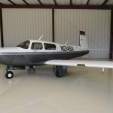Leaning mixture after start-up
-
Members Online
- Rsmithref
- slowflyin
- Rmfriday
- NickG
- Paul Thomas
- George Thomson
- Kirch56H
- Pinecone
- wombat
- aerolithium
- TCC
- FlyboyKC
- Dwb62
- PeterRus
- 201er
- Rmnpilot
- LANCECASPER
- ArtVandelay
- Max Clark
- Jake@BevanAviation
- 1980Mooney
- 201Steve
- Echo
- AndreiC
- ta2too
- Barneyw
- TNIndy
- eman1200
- takair
- jetdriven
- N201MKTurbo
- navysix
- dzeleski
- Jim Peace


Recommended Posts
Join the conversation
You can post now and register later. If you have an account, sign in now to post with your account.